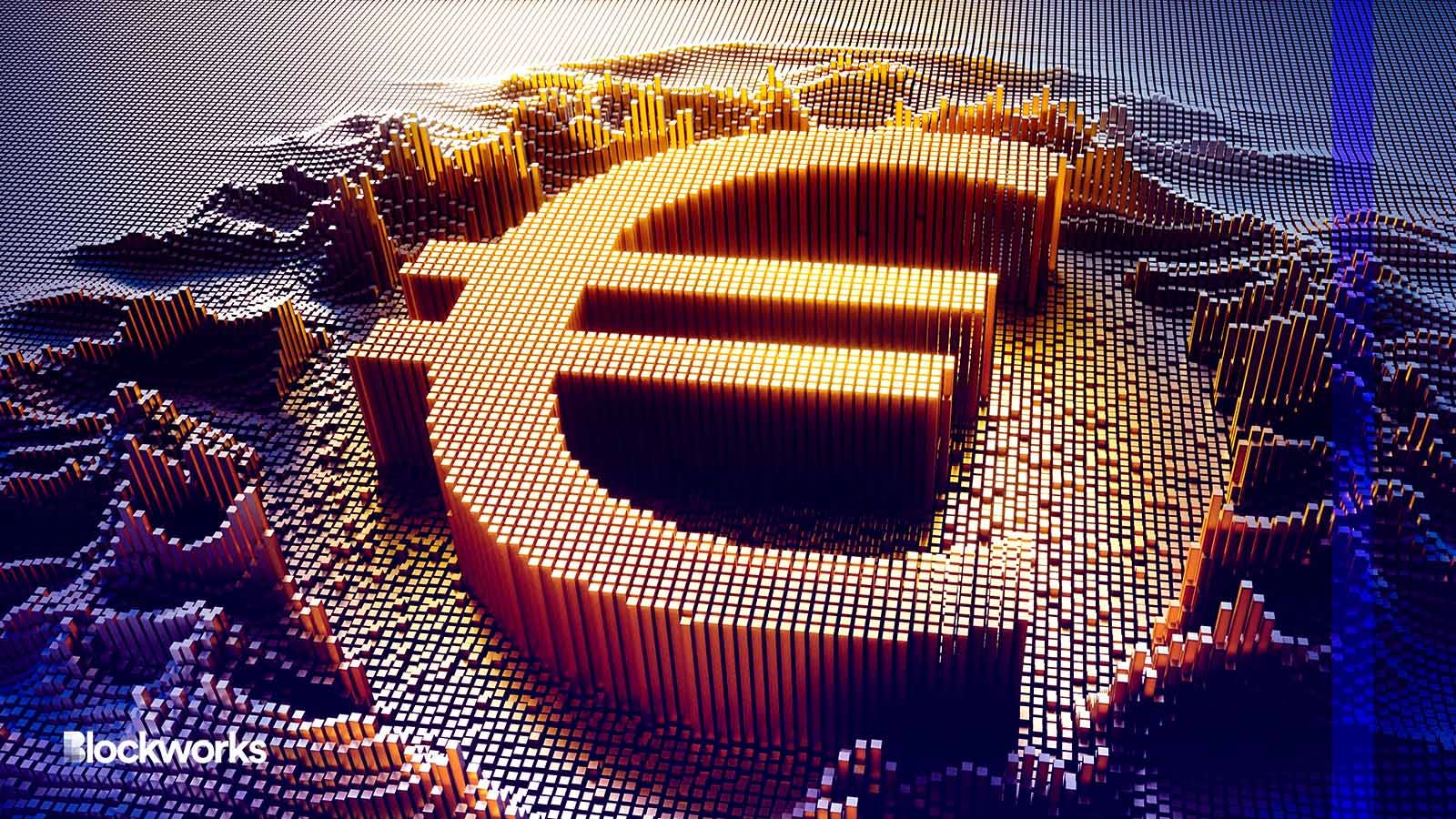European Union’s Digital Euro May Run on UTXO — Like Bitcoin
The ECB expects a decision on whether it will continue to test a digital euro this fall

peterschreiber.media/Shutterstock modified by Blockworks
The European Union prototyped how a digital euro would work, according to a report published in late May.
The back-end prototype and settlement engine, which was designed by Eurosystem, is called N€XT. Instead of using a distributed ledger technology (DLT) platform — which often utilize account systems akin to Ethereum — the governing body tested out the digital euro on a model based on unspent transaction output (UTXO).
“The tests showed that [UTXO] allows for fast and efficient validation of transactions. This system proved capable of supporting different types of transactions, while protecting users’ privacy by not revealing their payment patterns or account balances to the Eurosystem,” the report said.
One of the ECB’s objectives was to ensure that any version of a digital euro would still allow users to retain privacy, for which N€XT — through UTXO — allows.
N€XT “natively supports one-time UTXO addresses and does not need to know which wallet holds the UTXOs, nor the identity or pseudonym of their owner, in order to process UTXO transactions.”
The ECB laid out both the architecture and the challenges faced in the test. It stated that “two different large data sets need to be stored: the transactions and the UTXOs. Considering all these requirements, a scalable solution needs to rely on sharding.”
Digital euro could support offline payments
The prototype test took place over a span of eight months, from July 2022 to February 2023. The ECB explored how to implement and integrate a digital euro into the existing “payments landscape” in the EU.
The platform was designed alongside five different front-end prototypes (user interfaces) for the exercise. Those interfaces were contributed by private companies that responded to a public call by the ECB.
The front-end prototype each covered possible use cases, including person-to-person payments conducted both online and offline, shop payments by both a payer and payee and e-commerce payments.
“Additional prototyping work could explore technical alternatives for later design decisions that could not be included in the scope of this exercise, such as the set-up for cross-currency payments, dispute management and fraud management,” the ECB noted at the end of the report.
Back in 2021, the ECB initially announced that it was launching an investigation into a digital euro.
The ECB, alongside six other financial institutions — including the Bank of England and the Fed — penned a paper stating that some institutions are getting to a point where they may “decide on whether or not to move to the next stage of their CBDC work.”
However, the US and the BOE acknowledged that they’re not ready to move forward with CBDC implementation.
The ECB said it will decide in the fall of 2023 whether it wants to keep testing and developing a potential digital euro.
The EU recently passed the Markets in Crypto Assets, which requires crypto firms to register with the EU’s member states and gives the European Securities and Markets Authority as well as the European Banking Authority the ability to oversee the compliance of the firms.
News analysis by David Canellis
The UTXO model may be familiar to some, because it’s also used for Bitcoin. Other prominent public blockchains including Litecoin and Cardano are built on UTXO.
Wallets in Bitcoin’s UTXO system don’t hold the BTC themselves, but they manage the private keys necessary to sign transactions. The wallets effectively validate the user’s right to ‘move’ BTC (or rather, adjust the balances) from one account to another on the ledger.
- In the UTXO model, bitcoin isn’t ‘stored’ in addresses in the way that funds are stored in a physical bank vault.
- Instead, the blockchain serves as a digital ledger recording the movement of BTC.
- Ownership of BTC is established through a chain of digital signatures from previous transactions.
UTXO systems confirm private key holders have the power to spend the inputs, or currency, intended for transactions. An account-based system like Ethereum would instead check a user’s token balance before allowing them to transact.
While there are similarities between N€XT’s underpinnings and Bitcoin architecture, the two networks would still be drastically different in terms of decentralization.
Anyone with the right equipment can join the Bitcoin network to coordinate consensus. On the other hand, N€XT, if it weren’t controlled solely by the European Central Bank, is likely to be maintained by a handful of colluding entities with no opportunity for public participation.
Bitcoin is governed by a decentralized web of various entities, all working together in pursuit of a trustless money network untouched by the state. N€XT would instead harness blockchain and UTXO to exert supreme power over a system designed to enhance a fiat currency.
Jeffrey Albus contributed analysis.
Get the news in your inbox. Explore Blockworks newsletters:
- The Breakdown: Decoding crypto and the markets. Daily.
- 0xResearch: Alpha in your inbox. Think like an analyst.






